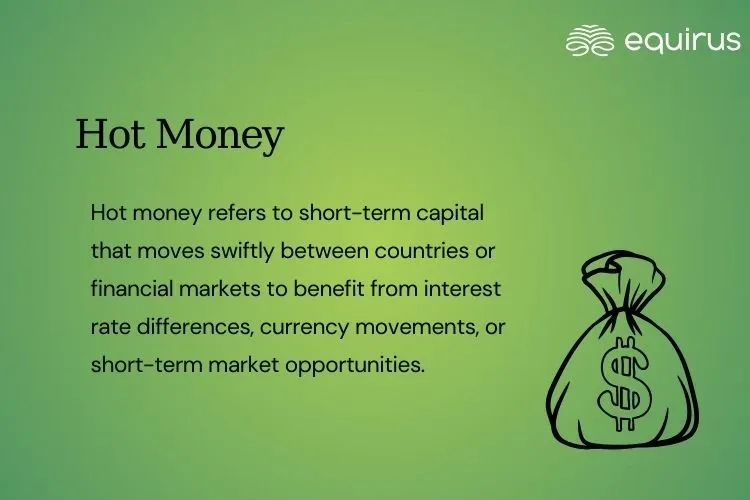Hot Money

Key Highlights
-
Hot money refers to short-term capital that moves swiftly between countries or financial markets to benefit from interest rate differences, currency movements, or short-term market opportunities.
-
Key characteristics includes short duration, speculative and globally mobile.
What is Hot Money?
Hot money refers to short-term capital that moves swiftly between countries or financial markets to benefit from interest rate differences, currency movements, or short-term market opportunities. Unlike long-term investments, these flows are speculative and highly sensitive to global market conditions.
Key Characteristics of Hot Money
-
Short Duration: Typically enters and exits markets quickly.
-
Speculative: Seeks immediate financial returns rather than long-term value creation.
-
Globally Mobile: Responds rapidly to economic data, central bank actions, or geopolitical developments.
Implications for Markets
-
Liquidity Boost: Inflows of hot money can improve market liquidity and drive up asset prices in the short term.
-
Volatility Risk: Sudden outflows can pressure stock indices, weaken domestic currencies, and disrupt financial stability.
Hot Money in India
In India, hot money flows are largely channeled through Foreign Institutional Investors (FIIs) and Foreign Portfolio Investors (FPIs). These flows often increase during periods of strong growth outlook or favorable interest rate differentials. However, they can reverse sharply when global interest rates rise or when risk appetite declines.
Why It Matters for Investors?
For HNIs and UHNIs, understanding hot money is important for wealth preservation and global investment planning. While inflows may create short-term market opportunities, portfolios exposed heavily to hot money-driven sectors or assets face higher volatility. A disciplined approach with diversified allocations across geographies and asset classes helps mitigate these risks.
